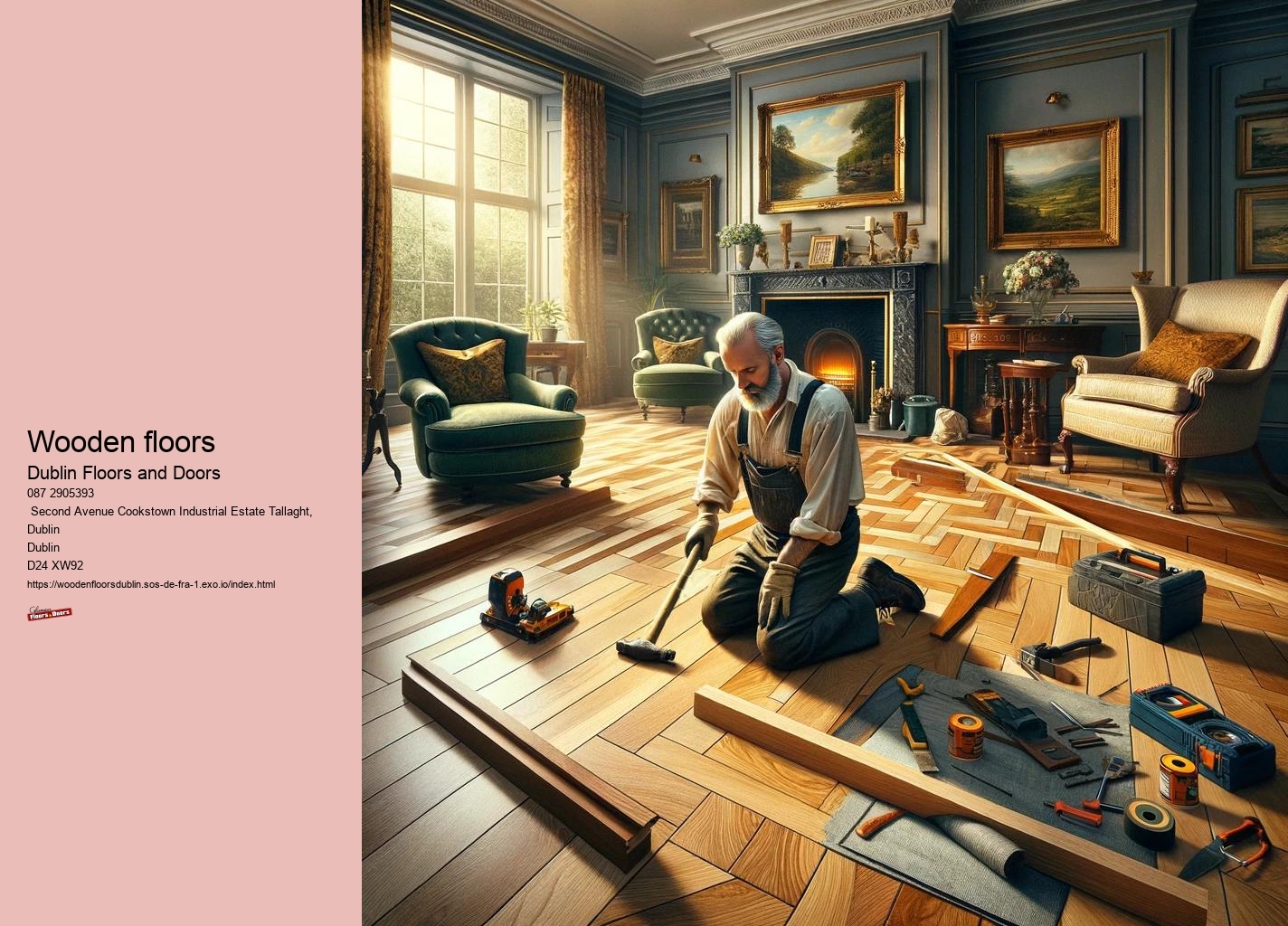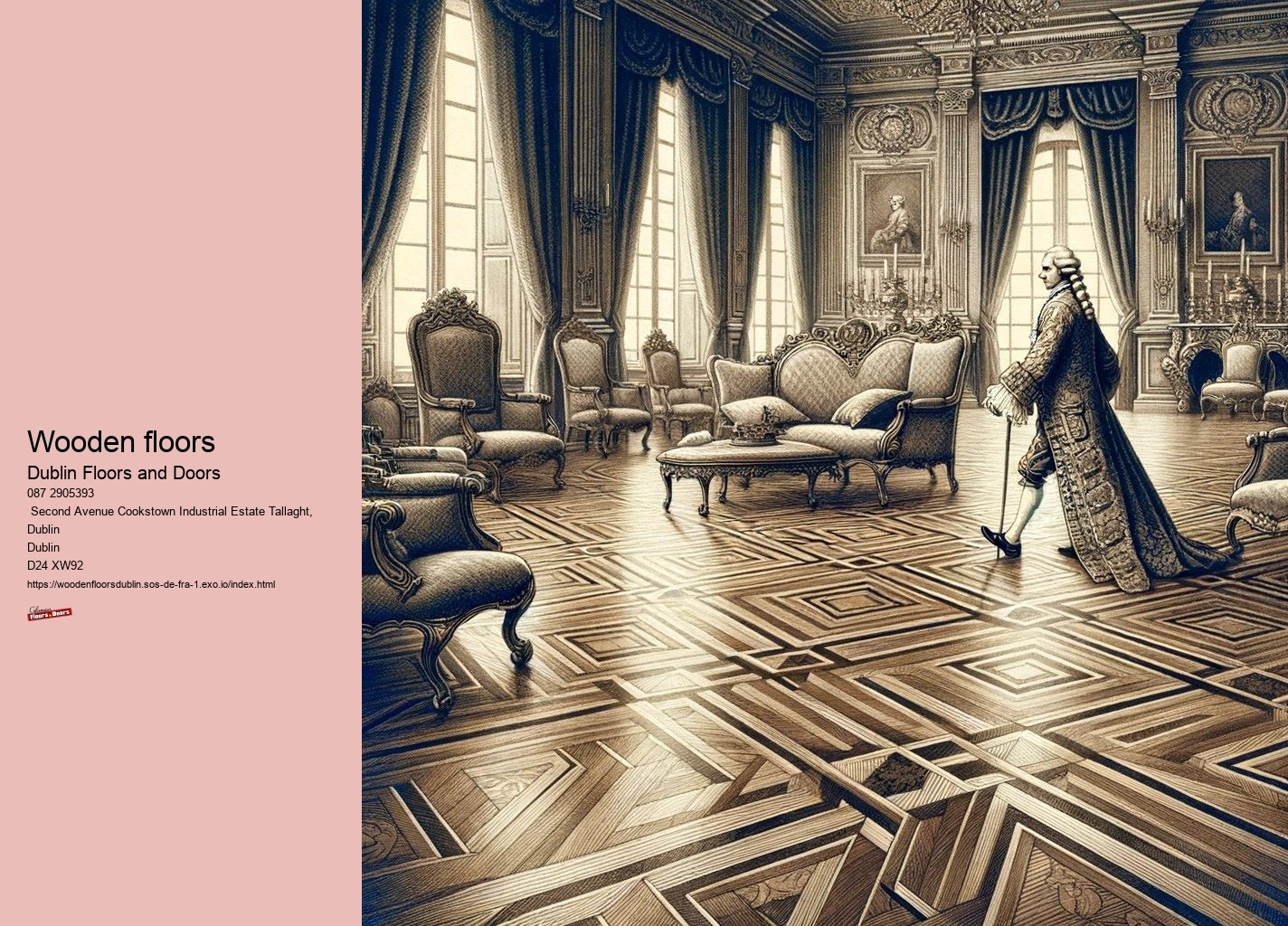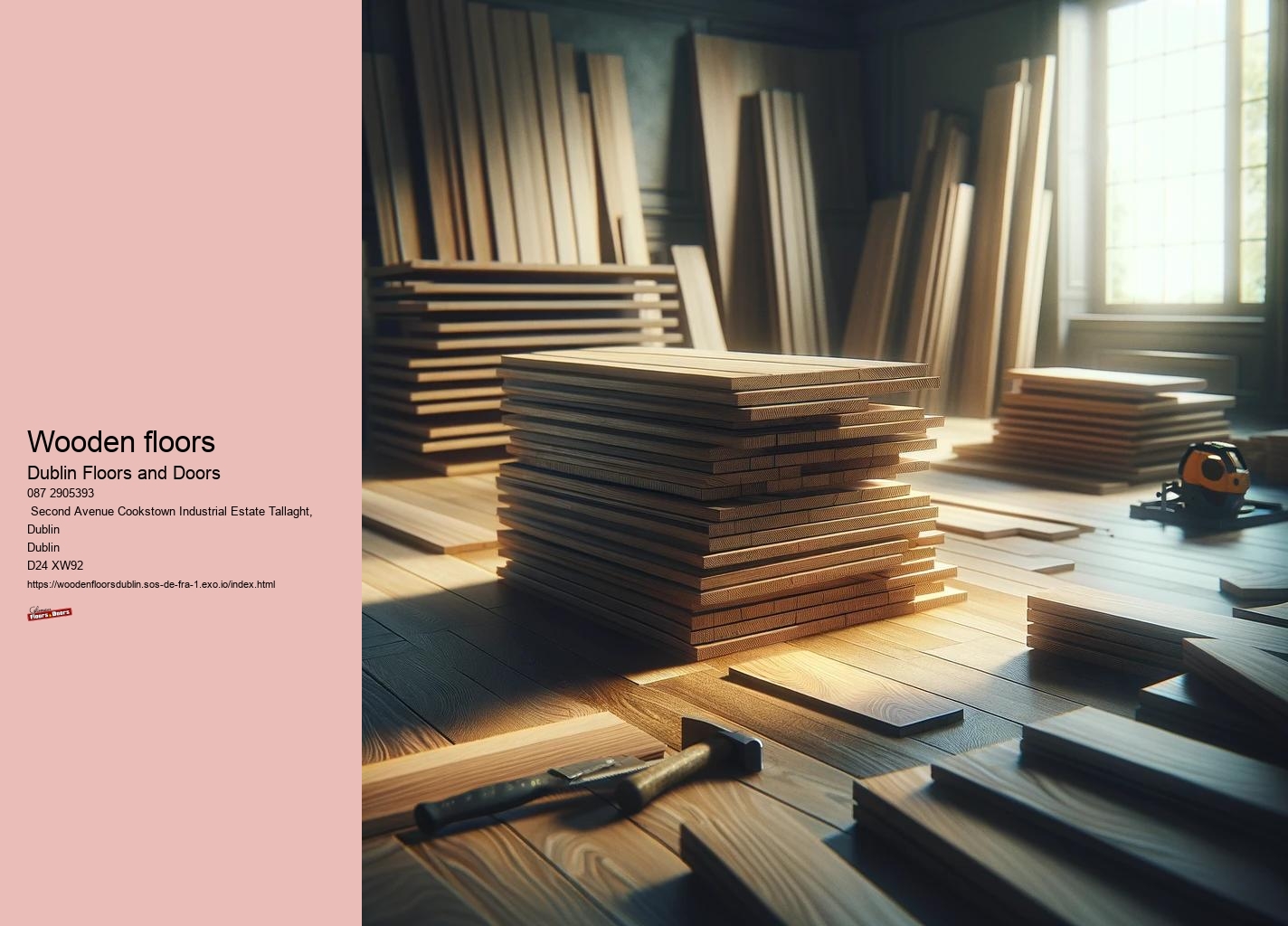

If you've been pondering a flooring update in Dublin, laminate flooring might just be the solution you've been seeking. With its blend of affordability and durability, laminate offers a practical and stylish option for your home.
But what sets laminate flooring in Dublin apart from other choices? The answer lies in the diverse range of styles and finishes tailored to suit every taste and budget.
Stay tuned to uncover how laminate flooring can transform your Dublin home into a mod-ern and practical sanctuary.
Key Takeaways of laminate flooring
• Cost-effective flooring mimicking real wood with enhanced protection in Dublin
• Highly durable, scratch and impact-resistant, outlasting other flooring types
Laminate floors are composed of multiple layers that are fused together through a lamination process. Here's a breakdown of the typical layers found in laminate flooring:
1. **Wear Layer**: The top layer is a clear, protective coating made from aluminum oxide or melamine resin. This layer provides resistance to scratches, stains, and wear, ensuring the durability of the flooring.
2. **Decorative Layer**: Below the wear layer is a high-resolution photographic layer that mimics the appearance of natural materials such as wood, stone, or tile. This decorative layer gives laminate flooring its realistic look.
3. **Core Layer**: The core of laminate flooring is usually made from high-density fiberboard (HDF) or medium-density fiberboard (MDF). This layer provides stability, strength, and resistance to impacts and moisture.
4. **Backing Layer**: The bottom layer is a melamine resin layer that provides additional stability and moisture resistance. It also helps balance the floor to prevent warping.
### Composition Details:
- **Aluminum Oxide**: A compound used in the wear layer for its hardness and durability.
- **Melamine Resin**: A type of plastic used in the wear and backing layers for its strength and moisture resistance.
- **High-Density Fiberboard (HDF)**: A dense, engineered wood product made from wood fibers bonded with resin under heat and pressure.
- **Medium-Density Fiberboard (MDF)**: Similar to HDF but with a slightly lower density, used in some laminate cores.
### Key Characteristics:
- **Durability**: Laminate floors are highly durable and resistant to scratches, dents, and fading.
- **Affordability**: Typically more cost-effective than hardwood or stone flooring while offering similar aesthetics.
- **Easy Installation**: Often designed with click-lock or tongue-and-groove systems that make DIY installation straightforward.
- **Versatility**: Available in a wide range of styles and designs to match various decors.
- **Low Maintenance**: Easy to clean and maintain, requiring only regular sweeping and occasional damp mopping.
Laminate flooring is a popular choice for homeowners seeking the look of natural materials without the high cost or maintenance requirements.
Maintaining laminate floors involves regular cleaning and care to ensure their longevity and appearance. Here are some key steps and tips for maintaining laminate floors:
### Regular Cleaning
1. **Sweeping or Vacuuming**: Regularly sweep or vacuum your laminate floors to remove dust, dirt, and debris. Use a soft-bristle broom or a vacuum cleaner with a hard floor attachment to avoid scratching the surface.
2. **Damp Mopping**: Clean the floor with a damp mop (not wet) using water or a laminate floor cleaner. Avoid using excessive water as it can seep into the seams and cause damage. Wring out the mop thoroughly before using it on the floor.
### Spot Cleaning
3. **Spills and Stains**: Wipe up spills immediately with a dry or slightly damp cloth. For stubborn stains, use a mild cleaner specifically designed for laminate floors. Avoid abrasive cleaners, steel wool, or scouring pads as they can damage the surface.
4. **Streaks and Residue**: If you notice streaks or residue after mopping, buff the area with a dry microfiber cloth. Make sure to use a cleaner that doesn’t leave a residue.
### Protective Measures
5. **Furniture Pads**: Attach felt pads to the bottoms of furniture legs to prevent scratches when moving furniture. Avoid dragging heavy objects across the floor.
6. **Rugs and Mats**: Place rugs or mats at entryways to reduce the amount of dirt and moisture brought onto the floor. Use non-slip, non-rubber-backed mats to avoid any potential damage to the floor.
7. **Humidity Control**: Maintain consistent indoor humidity levels (between 35% and 65%) to prevent the laminate from expanding or contracting. Use a dehumidifier in humid climates and a humidifier in dry climates.
### Avoiding Damage
8. **High Heels and Pet Nails**: Avoid walking on laminate floors with high heels or cleats, as they can cause dents or scratches. Trim your pets' nails regularly to prevent them from scratching the floor.
9. **Sunlight Exposure**: Prolonged exposure to direct sunlight can cause the laminate to fade. Use curtains or blinds to limit direct sunlight or rearrange furniture periodically to ensure even exposure.
### Long-Term Care
10. **Refinishing**: Unlike hardwood floors, laminate floors cannot be refinished. If the floor gets damaged or worn out, you may need to replace the affected planks or consider a full replacement if necessary.
### Additional Tips
- **Avoid Wax or Polish**: Do not use wax, polish, or oil-based products on laminate floors as they can create a slippery surface and damage the finish.
- **Gentle Cleaners**: Use gentle cleaners that are pH neutral and specifically designed for laminate floors. Avoid using harsh chemicals like ammonia, bleach, or vinegar.
- **Professional Cleaning**: Consider professional cleaning periodically to keep your laminate floors in top condition.
By following these maintenance tips, you can keep your laminate floors looking clean and beautiful for many years.
Maintaining laminate floors involves regular cleaning and care to ensure their longevity and appearance. Here are some key steps and tips for maintaining laminate floors:
### Regular Cleaning
1. **Sweeping or Vacuuming**: Regularly sweep or vacuum your laminate floors to remove dust, dirt, and debris. Use a soft-bristle broom or a vacuum cleaner with a hard floor attachment to avoid scratching the surface.
2. **Damp Mopping**: Clean the floor with a damp mop (not wet) using water or a laminate floor cleaner. Avoid using excessive water as it can seep into the seams and cause damage. Wring out the mop thoroughly before using it on the floor.
### Spot Cleaning
3. **Spills and Stains**: Wipe up spills immediately with a dry or slightly damp cloth. For stubborn stains, use a mild cleaner specifically designed for laminate floors. Avoid abrasive cleaners, steel wool, or scouring pads as they can damage the surface.
4. **Streaks and Residue**: If you notice streaks or residue after mopping, buff the area with a dry microfiber cloth. Make sure to use a cleaner that doesn’t leave a residue.
### Protective Measures
5. **Furniture Pads**: Attach felt pads to the bottoms of furniture legs to prevent scratches when moving furniture. Avoid dragging heavy objects across the floor.
6. **Rugs and Mats**: Place rugs or mats at entryways to reduce the amount of dirt and moisture brought onto the floor. Use non-slip, non-rubber-backed mats to avoid any potential damage to the floor.
7. **Humidity Control**: Maintain consistent indoor humidity levels (between 35% and 65%) to prevent the laminate from expanding or contracting. Use a dehumidifier in humid climates and a humidifier in dry climates.
### Avoiding Damage
8. **High Heels and Pet Nails**: Avoid walking on laminate floors with high heels or cleats, as they can cause dents or scratches. Trim your pets' nails regularly to prevent them from scratching the floor.
9. **Sunlight Exposure**: Prolonged exposure to direct sunlight can cause the laminate to fade. Use curtains or blinds to limit direct sunlight or rearrange furniture periodically to ensure even exposure.
### Long-Term Care
10. **Refinishing**: Unlike hardwood floors, laminate floors cannot be refinished. If the floor gets damaged or worn out, you may need to replace the affected planks or consider a full replacement if necessary.
### Additional Tips
- **Avoid Wax or Polish**: Do not use wax, polish, or oil-based products on laminate floors as they can create a slippery surface and damage the finish.
- **Gentle Cleaners**: Use gentle cleaners that are pH neutral and specifically designed for laminate floors. Avoid using harsh chemicals like ammonia, bleach, or vinegar.
- **Professional Cleaning**: Consider professional cleaning periodically to keep your laminate floors in top condition.
By following these maintenance tips, you can keep your laminate floors looking clean and beautiful for many years.
Wooden floors can be environmentally friendly, but their impact depends on several factors such as the type of wood, the sourcing practices, and the manufacturing process. Here are key considerations to determine the environmental friendliness of wooden floors:
### Factors Affecting Environmental Friendliness
1. **Sustainable Sourcing**:
- **Certification**: Look for wood certified by organizations like the Forest Stewardship Council (FSC) or the Programme for the Endorsement of Forest Certification (PEFC). These certifications ensure the wood is harvested from sustainably managed forests.
- **Local Sourcing**: Choose wood sourced locally to reduce the carbon footprint associated with transportation.
2. **Type of Wood**:
- **Reclaimed Wood**: Using reclaimed or recycled wood reduces the need for new trees to be cut down and gives new life to materials that would otherwise be discarded.
- **Fast-Growing Species**: Opt for wood from fast-growing species like bamboo or cork, which regenerate more quickly than hardwoods like oak or maple.
3. **Manufacturing Process**:
- **Low-Emission Adhesives**: Choose wood products manufactured using low-emission adhesives and finishes to minimize the release of volatile organic compounds (VOCs) that can harm indoor air quality and the environment.
- **Energy-Efficient Production**: Support companies that use energy-efficient production methods and renewable energy sources in their manufacturing processes.
4. **Longevity and Durability**:
- **Durable Wood Types**: Select hardwood species known for their durability, which can last for decades and reduce the need for frequent replacement.
- **Proper Maintenance**: Properly maintaining wooden floors extends their lifespan, reducing the environmental impact associated with replacement and disposal.
5. **End-of-Life Considerations**:
- **Recyclability**: Wooden floors are biodegradable and can be recycled or repurposed at the end of their life cycle.
- **Disposal**: Unlike synthetic flooring materials, wood can decompose naturally, minimizing environmental harm.
### Benefits of Wooden Floors
- **Carbon Sequestration**: Trees absorb carbon dioxide as they grow, and this carbon remains stored in the wood throughout its lifespan.
- **Renewable Resource**: Wood is a renewable resource, especially when sourced from responsibly managed forests.
- **Biodegradability**: Wood is biodegradable, reducing waste and environmental pollution compared to non-biodegradable flooring materials.
### Potential Environmental Drawbacks
- **Deforestation**: Unsustainable logging practices can lead to deforestation, habitat destruction, and biodiversity loss.
- **Transport Emissions**: Transporting wood over long distances can result in significant carbon emissions.
- **Chemical Treatments**: Some wooden floors may be treated with chemicals that can harm the environment and human health.
### Making Environmentally Friendly Choices
To ensure your wooden floors are environmentally friendly, consider the following steps:
1. **Research Suppliers**: Choose suppliers committed to sustainable practices and transparent about their sourcing and manufacturing processes.
2. **Check Certifications**: Look for wood products with credible environmental certifications.
3. **Opt for Quality**: Invest in high-quality, durable wood flooring that will last longer and require less frequent replacement.
4. **Consider Alternatives**: Explore eco-friendly alternatives like bamboo, cork, or reclaimed wood, which can offer similar aesthetics with a lower environmental impact.
By making informed choices, you can enjoy the beauty and durability of wooden floors while minimizing their environmental impact.
• Varied design options from natural wood to modern patterns available
• Affordable laminate flooring from reputable suppliers in Dublin, ensuring quality and efficiency
Laminate flooring in Dublin offers homeowners a cost-effective, durable, and versatile flooring solution that mimics the look of real wood while providing enhanced protection against daily wear and tear. With prices ranging from €7 to €30 per square yard, Dublin provides a wide range of finishes to achieve a natural wood look within a budget-friendly range. The installation services by experienced experts ensure quick completion, adding to the appeal of laminate flooring for homes in Dublin.


In terms of design variety and adaptability, laminate flooring in Dublin comes in a wide ar-ray of colors, designs, and patterns, including dark wood, light wood, grey, and various patterns like herringbone. This variety allows homeowners to choose options that suit their design preferences and styles, enhancing the overall aesthetic of their space. The adaptability of laminate flooring to different design styles makes it a favorable choice for homeowners looking to personalize their living areas with ease.
With its tough external layer and resin coating, laminate flooring boasts exceptional du-rability and longevity compared to other flooring options like hardwood, vinyl, or hard sur-faces. The following table highlights the key durability facts and benefits of laminate floor-ing:
Durability Facts Benefits
Extremely durable More scratch-resistant
Tough external layer Impact-resistant
Resin coating Longer lasting than hardwood, vinyl, or hard surfaces

Virtually resistant to pets, kids, and high heels Stain, fade, and moisture-resistant
Laminate flooring is known for being highly resistant to wear and tear, making it a popular choice for households with children or pets. Its ability to withstand scratches, impacts, and moisture damage sets it apart from many other flooring materials, ensuring a long-lasting and low-maintenance flooring option for your home.
For those seeking a budget-friendly and stylish flooring option in Dublin, a diverse range of laminate designs awaits to enhance your home decor effortlessly.Choose from various options such as Natural Wood Laminate Flooring, which replicates natural wood patterns and textures while being resistant to humidity, making it a durable and practical choice that adds a classic touch to your home decor.
Opt for Walnut Brown Wood Laminate Flooring for a modern living room that comple-ments minimalistic interior design and creates a warm ambiance.If you're looking for a suitable kitchen flooring, Maple Wood Laminate Flooring provides a clean finish that's convenient, practical, and resistant to daily wear and tear.
Consider Patterned Laminate Flooring in Natural Wood for a decorative chevron pattern design that creates a focal point in the room, best paired with neutral room decor to en-hance the aesthetic appeal of your flooring effortlessly.
Enhancing your home decor with laminate flooring in Dublin not only brings style options but also offers cost-effectiveness and affordability, making it a practical choice for budg-et-conscious homeowners.

Yes, you can install wooden floors over tile if the tile is in good condition, level, and properly adhered to the subfloor.
Yes, but it’s recommended to use engineered wood rather than solid wood due to moisture levels in basements. Ensure proper moisture control measures are in place.
Basic tools include a tape measure, saw, hammer, nails or adhesive, spacers, underlayment, and a mallet. Additional tools may be needed based on specific installation methods.